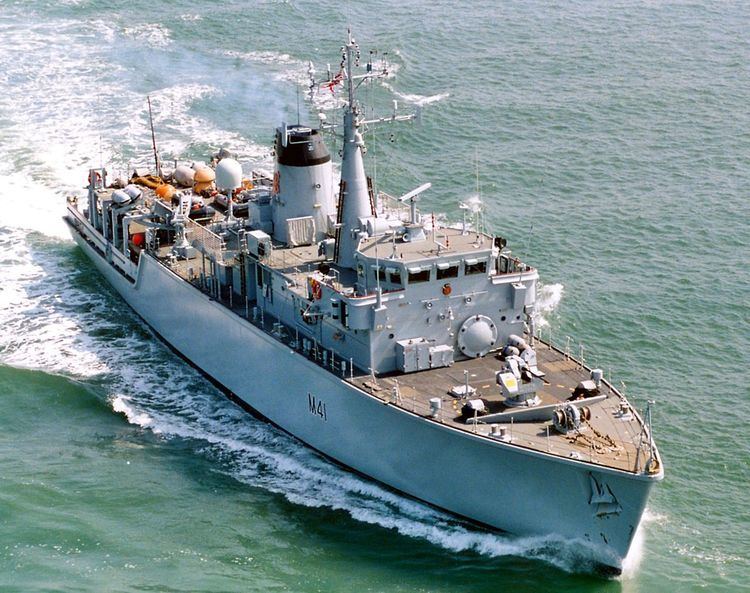In commission 1979– | Built 1978–1988 Completed 13 | |
 | ||
Builders Vosper ThornycroftYarrow Shipbuilders Limited Operators | ||
The Hunt class is a class of thirteen mine countermeasure vessels of the Royal Navy. As built, they combined the separate roles of the traditional minesweeper and that of the active minehunter in one hull, but later modifications saw the removal of mine-sweeping equipment. They have a secondary role as offshore patrol vessels.
Development
Upon introduction in the early 1980s they were the largest warships ever built out of glass-reinforced plastic and are the last in operation to use the Napier Deltic diesel engine. All were built by Vosper Thornycroft in Woolston except Cottesmore and Middleton, which were built by Yarrow Shipbuilders Limited on the River Clyde. Quorn was the last ship of the class launched.
The capabilities of the remaining eight vessels of the Hunt class have been significantly enhanced by the installation of Sonar Type 2193 and the NAUTIS 3 command system. The performance of Sonar 2193 exceeds that of any other mine hunting sonar in service in the world today and is capable of detecting and classifying an object the size of a football at a distance of up to 1,000 metres. In late 2007 Chiddingfold used the Seafox drone, the Royal Navy's mine disposal system, during Exercise Neptune Warrior off Scotland. Seafox is described by the MOD as a "state of the art fire and forget system, capable of destroying mines in depths of up to 300 metres".
